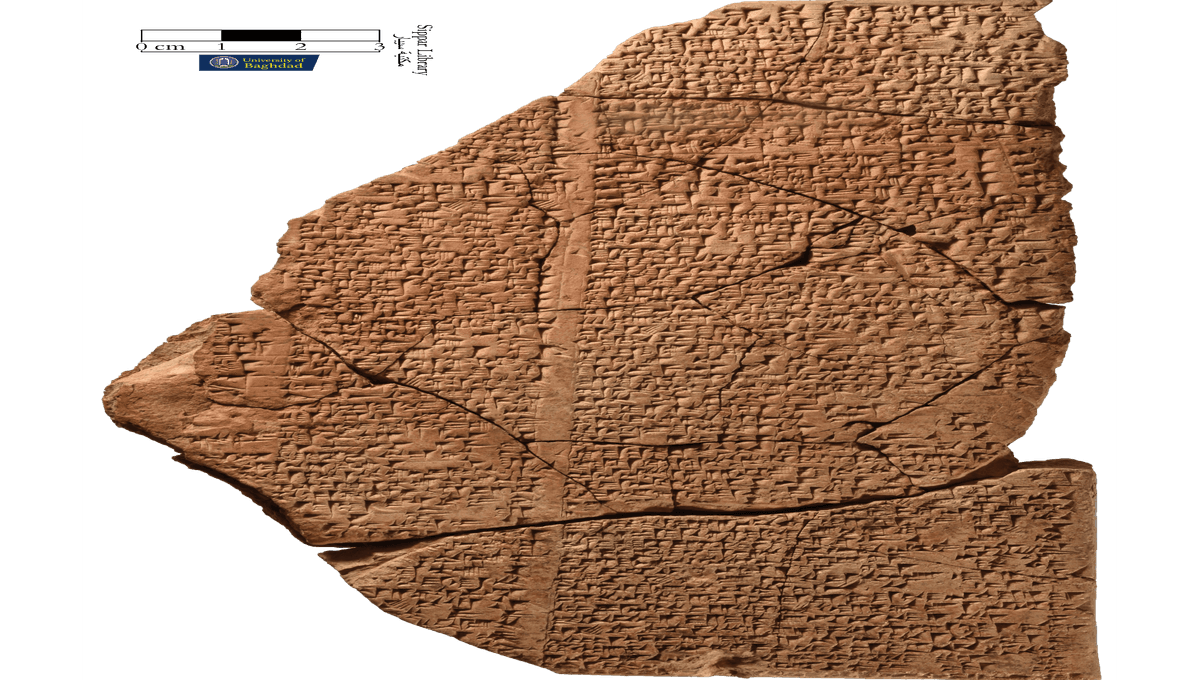-
Web sayfası bildirimcisi
- EXPLORE
-
Sayfalar
-
Blogs
-
Forums
"Hymn to Babylon": Missing Mesopotamian Text Dating Back Nearly 3,000 Years Discovered

"Hymn to Babylon": Missing Mesopotamian Text Dating Back Nearly 3,000 Years Discovered
Archaeologists have found a hymn dating from nearly 3,000 years ago that describes the city of Babylon in glowing terms, praises its people, location, and river. It seems the words struck such a chord with the inhabitants of what was, for a time, the world’s largest city, that they were widely copied so that it could be taught to school children. The tide of civilizations caused it to be lost until now.
The singing of patriotic songs is a key part of education worldwide, but whether they love it or hate it, few students have probably wondered how far back the practice goes. The answer, it seems, is at least halfway to the first large settlements. Moreover, once the idea took off, the Babylonians at least appear to have taken it very seriously. In the quest to reconstruct the lost heritage of ancient Babylon, two archaeologists have recovered most of an ancient hymn written in cuneiform. "It's a fascinating hymn that describes Babylon in all its majesty and gives insights into the lives of its inhabitants, male and female," said Professor Enrique Jiménez of Ludwig-Maximilians-Universität München in a statement. Jiménez and Dr Anmar Fadhil of the University of Baghdad estimate the original was 250 lines long, and that they have only found two-thirds of it, since so many clay tablets from the era have been broken before the end. Nevertheless, at least some of the surviving lines have been found on more than 30 tablets dating from between the 7th and 1st centuries BCE. When you consider how hard it was to scratch text into clay, compared to hitting the printer logo, or even copying onto paper, it’s clear Babylonians placed a high value on knowing this piece. Perhaps it came with a great tune, but surely the words resonated with the city’s inhabitants to last that long. The pair have translated the hymn to English, as well as providing commentary. Its length allows the hymn to touch a lot of bases, starting with lavishing praise on Marduk, Babylon’s patron god, and the gifts he supposedly bestowed on the city’s inhabitants. From Marduk himself, the hymn moves on to lauding his temple, Esagil, and then Babylon as a whole. Propaganda was perhaps less subtle three millennia ago: it’s doubtful a modern singer would describe their nation’s laws as perfect. The hymn moves on to comparing Babylon to different precious stones and a fruit garden. Specific acclaim is showered on the city’s gate and wall, and Alulu, mythologized as its founding king. Enrique Jiménez and Anmar Fadhil stand in front of the replica of the Ishtar Gate, once considered so world-leading it had a place in the hymn, with an image of a tablet and its translation. Image credit: © Junko Taniguchi In more familiar territory for modern ears, the Euphrates River, so essential to Babylon, is also described, including a celebration of the spring flood that fertilized the fields. “Its fields burgeon with herbs and flowers, Its meadows, in brilliant bloom, sprout barley, From which, gathered, sheaves are stacked, Herds and flocks lie on verdant pastures, Wealth and splendor—what befit mankind— Are bestowed, multiplied, and regally granted.” This is particularly significant, the authors write, because “Mesopotamian literature is sparing in its descriptions of natural phenomena; in particular, only one other lengthy description of the coming of spring seems to exist.” The people of Babylon are also lauded for their fairness, protecting the orphan and the humble, and abiding by the laws. The hymn even claims that Babylonians are noted for respecting foreigners who live among them. Residents of surrounding lands kept in slavery in Babylon over the centuries in which the hymn was popular probably begged to differ. However, Jiménez and Fadhil note, “In our text the foreigners referred to are specifically the foreign priests living in Babylon.” Evidence may have emerged that women held high status in even older cities a short way to the north, but things had changed by Babylon’s time. Although some lines are dedicated to the women of the city, their merit is described as lying in their “devotion and discretion” rather than heroic deeds. Still, as the only surviving reference to Babylonian women and their role, that’s better than nothing for historians. "The hymn was copied by children at school. It's unusual that such a popular text in its day was unknown to us before now," Jiménez said. Jiménez is part of a team digitizing every surviving fragment of cuneiform text and looking out for passages found on more than 20 tablets, indicating the value placed on them. The study is published in Iraq.


